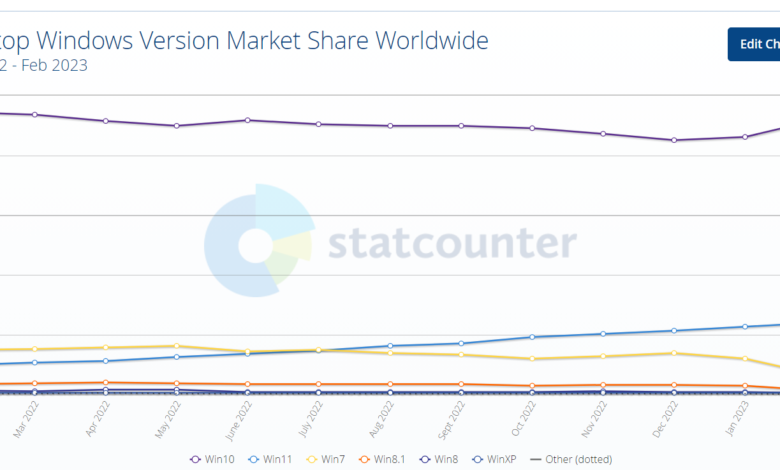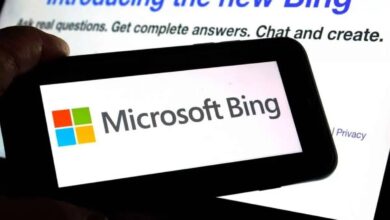Windows 10 market share skyrockets, while Windows 7 market share nearly halves

Analysing market share developments of the Windows operating system is usually a rather boring tasks. A percent or so shifts from one version to another, but unless something major happens, there is not much movement at all.
via Statcounter
Microsoft’s Windows 11 operating system, for example, gains about 1% of market share every month since its late 2021 launch. Similarly, the market share of older versions of Windows drops by about the same amount each month.
Something major happened in February 2023 though that has brought lots of movement to the market share statistics: Microsoft’s Windows 7 and 8.1 operating systems did not receive the monthly security updates anymore, as Microsoft ended support for both operating systems in January 2023.
While many Windows 7 and most Windows 8.1 devices did receive a last security update in January 2023, administrators and users noted that no update of any kind was provided in February.
Statcounter keeps tracks of usage statistics, including those of browsers and operating systems. The third-party tracks usage across many web properties and uses the data to create market share reports.
According to Statcounter’s latest information, Windows 7 usage nearly halved in February 2023. The operating system’s market share fell from 9.55% in January 2023 to 5.34% in February 2023.
Similarly, but at a smaller scale, Windows 8.1’s market share dropped from 2.28% in January 2023 to 1.14% in February 2023.
The big winner is not Microsoft’s newest operating system Windows 11, but Windows 10. Windows 10’s market share jumped from 68.86% in January 2023 to 73.31% in February 2023. Windows 11’s market share increased as well, but only by 1.01% to 19.13% in February 2023.
Explanations
With the Windows 7 and 8.1 operating systems falling out of support, users of these systems had a decision to make. Should they continue using the system and increase the security risk, upgrade to a new version of Windows, or even purchase a new device entirely.
A large percentage of Windows 7 and Windows 8.1 users seems to have picked the upgrade option. Most have selected Windows 10 as the target and not Windows 11. The explanation is simple: there is no direct upgrade from Windows 7 or 8.1 devices to Windows 11.
Additionally, Windows 11 has new hardware requirements that prevent direct upgrades from systems that do not meet the hardware requirements. While there are ways around this, Microsoft advised its customer base against upgrading unsupported systems, as it could not guarantee the delivery of any updates to these devices.
Windows 10 continues to be supported by Microsoft until October 2025. There is a chance that Microsoft is launching a second ESU program to extend support for Windows 10, at least for business and Enterprise customers.
Closing Words
Windows 7’s and 8.1’s market share will likely fall in March 2023 again. While it is unclear by how much, both market shares won’t fall to 0% anytime soon. Windows XP, an ancient operating system by today’s standards, is still listed by Statcounter with a 0.46% market share.
Most Windows 7 and 8.1 devices will be upgraded to Windows 10, as this is the direct upgrade path, and one of the easier options that are available to users.
Now You: do you still run Windows 7 or 8.1?
Thank you for being a Ghacks reader. The post Windows 10 market share skyrockets, while Windows 7 market share nearly halves appeared first on gHacks Technology News.
gHacks Technology News

